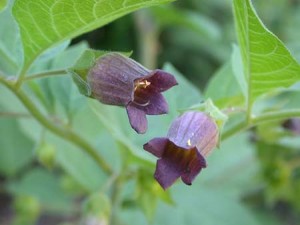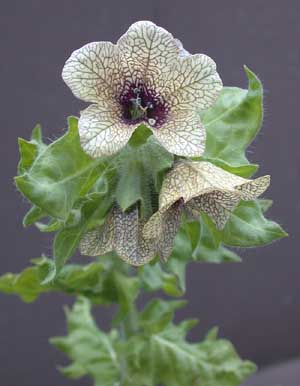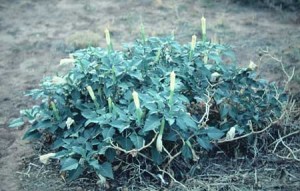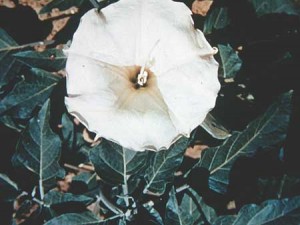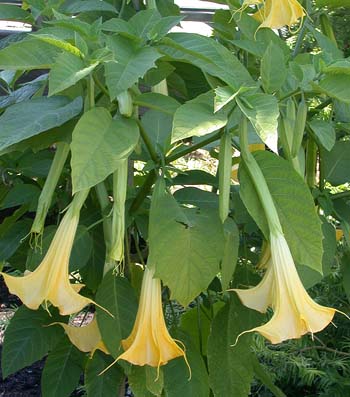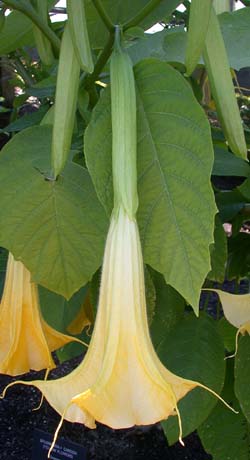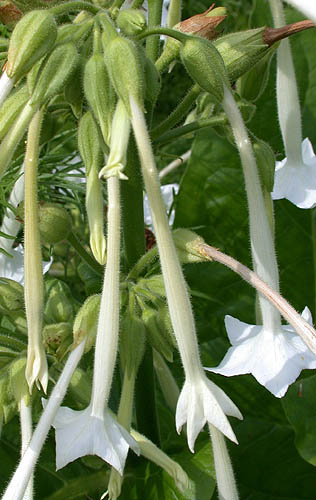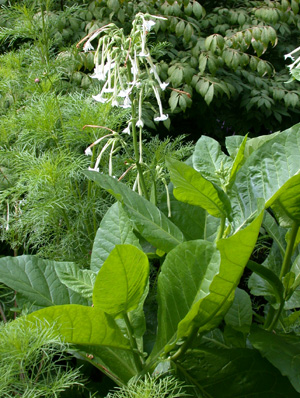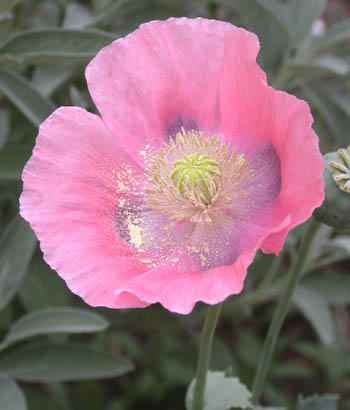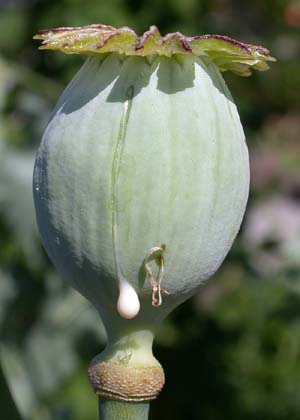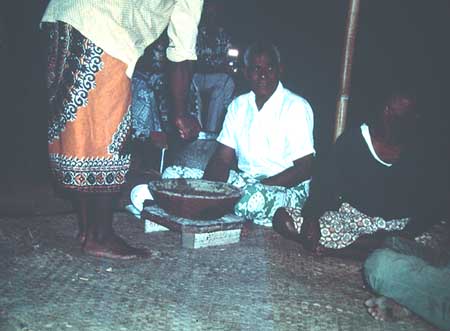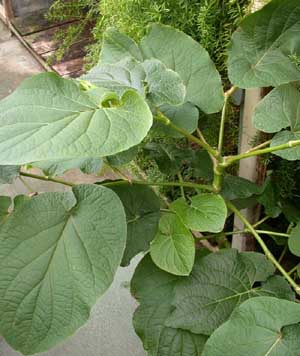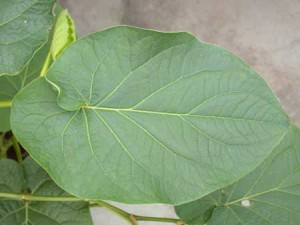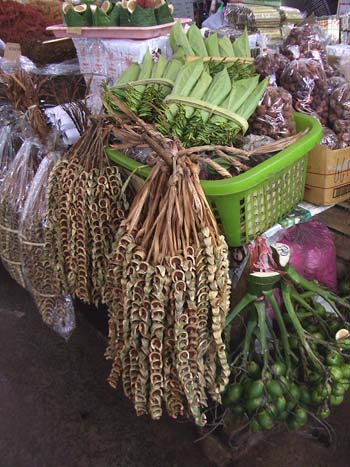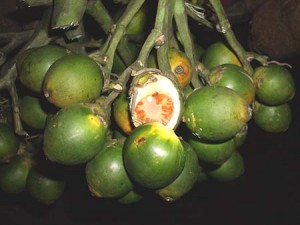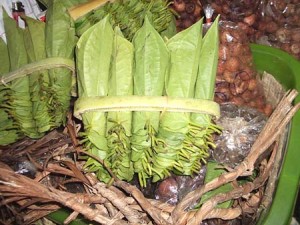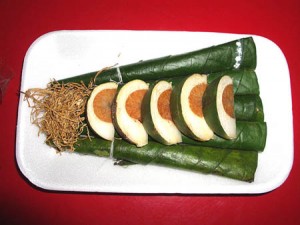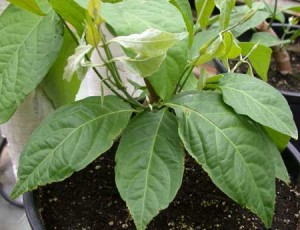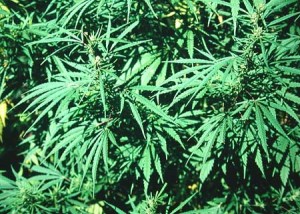Some plants contain chemicals that alter the state of mind of the consumer. They are often called psychodelics. There is a long history of people using such plants. In most cases, they are tightly linked to spirituality: free one’s mind from the constraints of the body and explore other realms for guidance. Medicine, in many societies does not just involve the consumption of a medicinal agent, but the synergy between the sprititual and the plant preparation generate a healing force.
Psychoactive Plants
Brief descriptions of the plants and effects of various plant preparations. More detailed discussion will be presented in lecture and during student presentations (no doubt).
Peyote – click here for more information.
Many members of the Solanaceae have been used in the alteration of the state of mind. Althoguh most people don’t realize it nicotine an alkaloid of tobacco (Nicotiana tabaccum) effects the central nervous system
Atropa belledonna has a long history of use both medicinally and cosmeticclay. In ancient Egypt drops of plant extracts were dropped into eyes causing thepupils to dilate and making a woman more beautiful. during medeival times it has been suggested that theuse of extracts of this plant and its close relative Hyoscmus (henbane) were used in witches’ potions. Today Atropine from Atropa belladonna is used in opthamology for dilating pupils of the eyes during examinations..
There are other members of the Solanaceae that contain alkaloids which have been used to alter the mind. Datura pictured below has been used for its hallucinogenic effects.
Brugmansia has also a long tradition of use by people.
We can not forget the most widely taken Solanaceae for psychoactive effects…tobacco. Nicotiana tobaccum is native tot the new world. Great plantations were developed in the United States.
As we have already seen in the previous section one of the most important analgesics (pain killers) used by humans comes from the opium oppy. The latex of the poppy contains a number of alkaloids including morphine, codeine, and papervine. Heroin a derivative of morphince. Morphine and heroin have become notorious in its addicitive properties.
Today opium poppies are grown in many parts of the world for pharmeceuticals, but there is still a major problem with illegal fiedls and elicit drug trade. In northern Thailand the hilltribes (peoples that have migrated into Thailand form other parts of Asia including Burma and China) have lived in the mountains and grown great fields of Opium.
The Royal Project was put in place by the King of Thailand. The idea was to take the land that was used to grow opium poppies and develop different types of agriculture (food and floral) to help the economy of the area.
The hilltribe people have also developed a reputation for their outstanding handicrafts which revolve around textiles.
These efforts have reduced the growth of opium poppies, but have not totally eliminated it.
Kava kava (Piper) is a relative of black pepper. The rhizome is ground to make a beverage which has an anti-anxiety effect. In recent years it has been banned locally because of its link to damge to the liver. It has a long history of consumption by Polynesian peoples. Taking the Kava Cup was important for meetings of people from different islands.
Betel Nut is an interesting…..
| Taking Betel requires the combination of two main ingredients: betel nut and betel leaf. They are actually from two differnt plants from two different plant families. The betel nut is from a palm tree. |
| The leaves of Piper (a relative of black pepper and kava) is a member of the Piperaceae. |
| In markets you can find ready to use kits which not only include the betel nuts and leaves, but also lime (carbonate) and tobacco. In other coutries spices can also be used. |
| To the right is a model of two people with the betel wrapped at one of the men’s feet. | 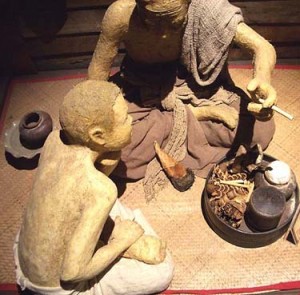 |
| Ayuasca is a drug used in South America. |
| One of the most commonly used plant for p is marijuana. It has a long history of use in india for both its narcotic effects and for its fibre. |

